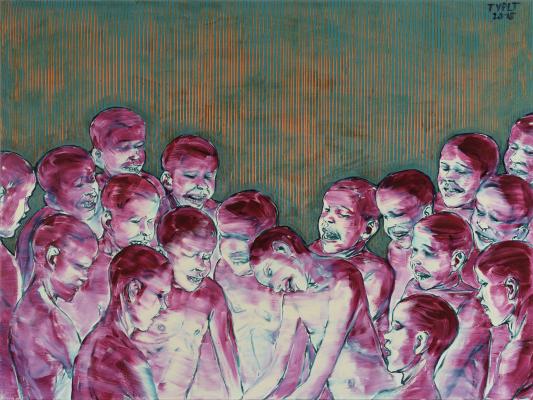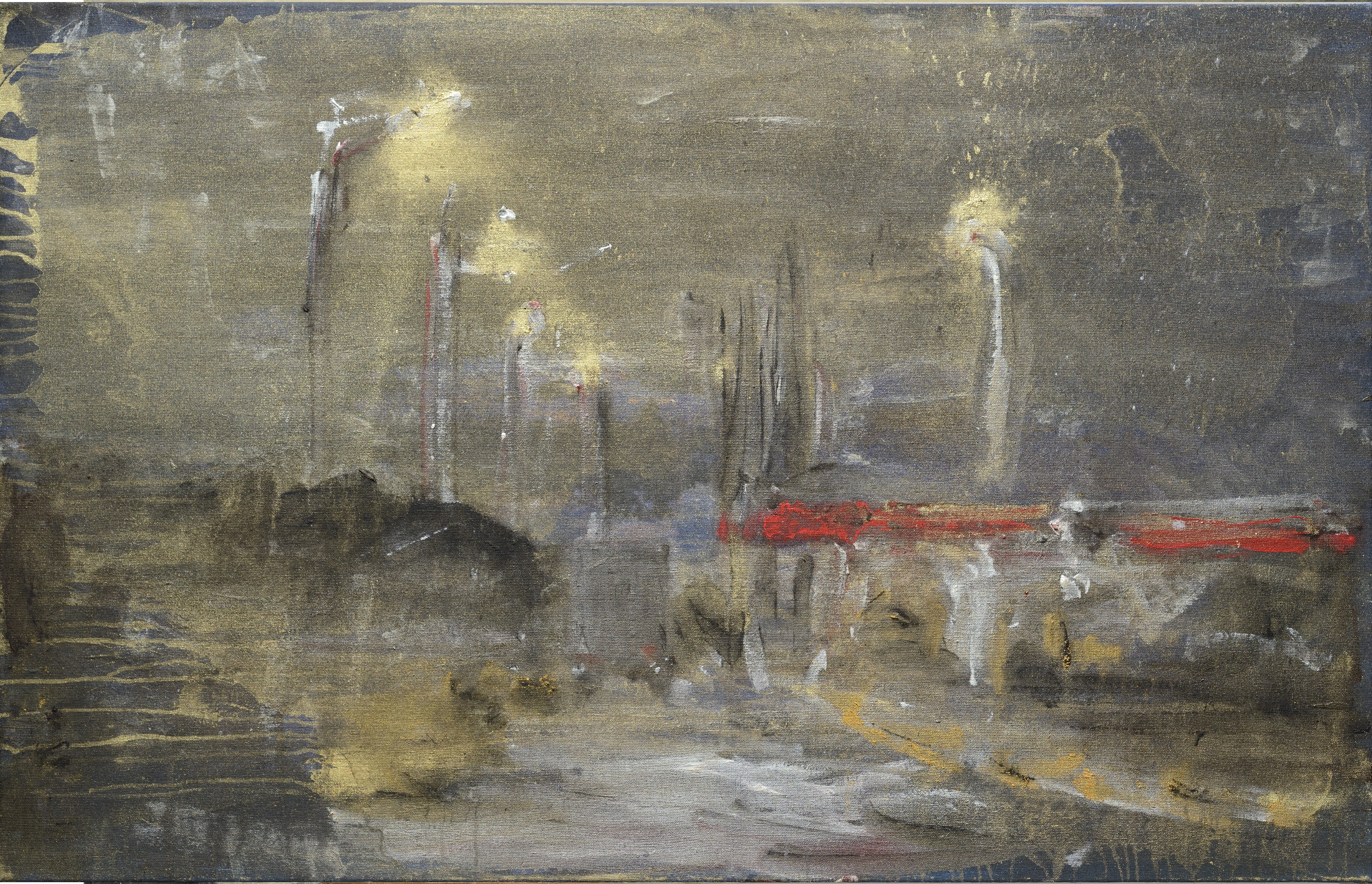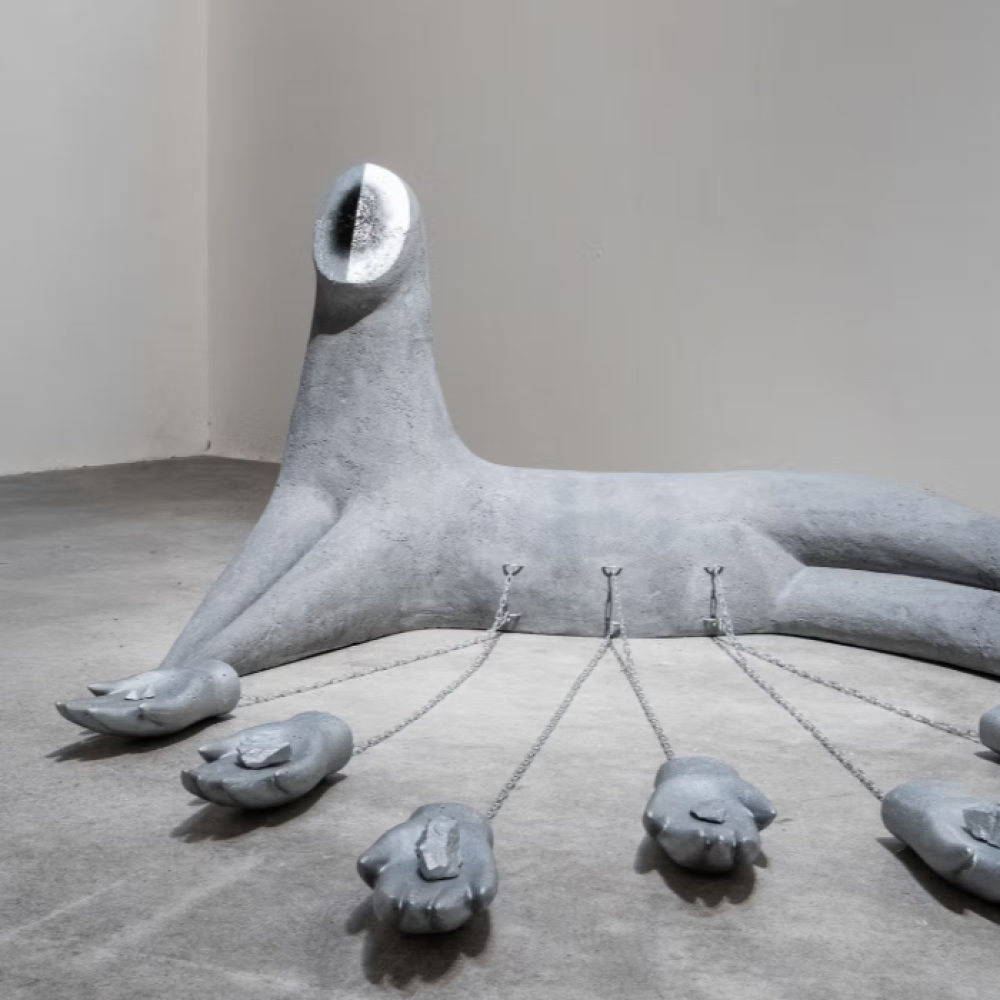
One of the latest additions to the ranks of publications available from the Telegraph's reception or e-shop is a comprehensive SPECTRUM. This ambitious book project is devoted to contemporary painting in the Czech Republic and also provides an insight into current developments in visual culture as a whole. It is a selection of forty-five artists, compiled over several years by curators Petr Vaňous, Barbora Ropková and Jan Kudrna. More specifically, artists born in Czechoslovakia in the 1970s and 1980s and active in the country are represented here. However, this is the only clearly definable link between them. As the name SPECTRUM itself reveals, our contemporary painting scene is very diverse not only in the number of artistic media, but also in the variety of approaches and opinions that the artists mentioned personify.
The introduction to each artist is preceded by four texts, written by art historian Václav Hájek and all of the above-mentioned curators, which comment in various forms on topics related to contemporary art. In his section entitled Let's Learn Not to Understand, Václav Hájek divides the artists' works into several positions in the painting scene. According to him, contemporary painting represents a certain "arena of discourses" rather than a unified painting principle. Thus, categories such as: Painting crowded with flesh, The Fold, The Grotesque, The Blur, Melancholy, The Full Void...

The idea of fragmentation is also accentuated in the text A Subset of Relationships by the editor of the whole book, Petr Vaňous, who confirms that the contemporary scene is characterized by diversity and expressive dispersion. Thus, in the postmodern plurality it is necessary to look for new essences. Previously separate expressive and material approaches are gradually becoming more flexible and the imaginary boundary between them increasingly permeable.
The Permeable Boundaries of Painting is the title of another text by art historian and critic Barbara Ropka, who develops the idea of permeability when she talks about the transformation and finding of new ways of making art after 2000. She also gives an example of a certain contamination, but at the same time an expansion of painting when it became a tool for conceptual works.
The introductory text section concludes with Jan Kudrna's reflection entitled Czech Painting in the Age of European Experience, where he discusses the causes and conditions necessary for the birth of the early 21st century generation of painting, assuming that this new painting is the result of a distinctive genesis, as it was in the past.
What follows is the main body of the book - pictorial examples of works by forty-five artists arranged alphabetically, with each given sufficient space to form a picture of the artist's ideological and formal approach. Reflecting on the work of living artists naturally has the advantage of allowing interaction with them, so after the main pictorial section come a few pages where space is given to the artists to comment on one of three questions posed, touching on their view of the Czech art scene, reflecting on the existence of the contemporary image or introducing the way they work and finding inspiration.
More than six hundred pages of the book are rounded off with brief biographies of all the artists already presented, presenting their lives and greatest achievements to date.
By Barbora Langová / Telegraph Gallery







